Buying or selling a salon industry client base is a popular topic on forums, social media and is met with a lot of differing opinions and discussion. Salonspa Connection has assisted in several of these types of transactions, so we thought it would be helpful to explain how this can work, and if it may work for you. My name is Susan Wos, I am the founder of the only beauty business brokerage, Salonspa Connection.
Thank you for reading this post, don't forget to subscribe!
Paying an individual for clientele can also be a great negotiation piece for ANY service-based business acquisition, not just from one person to another. If you are in the market to buy or sell a beauty industry client base, the ideas in this blog can be applied to a number of different exit strategies for businesses of every shape and size.
Regardless of the size of your business you may have, we offer several flexible options for those seeking help in beauty business acquisitions- contact us to get the help you need!
Let’s start with the biggest question- Can someone buy or sell a salon clientele? The short answer is yes.
Whether you are in need of selling your hair, nails, esthetics or massage clientele or you are thinking about acquiring a beauty professional’s business, this particular blog will explain what’s involved and what it looks like to sell a solo business in detail.
Whatever your reasoning is to buy or sell, get all the facts and learn how to go about it, below!
Thinking about retiring as a solopreneur salon, spa or barber professional? Selling a clientele to another professional who could benefit from an injection of new business is an excellent strategy.
So often we see salon owners, hair stylists, estheticians and nail techs retire with a great client base and just bid them farewell. If you plan ahead and stay organized, you may be able to monetize a loyal customer list.
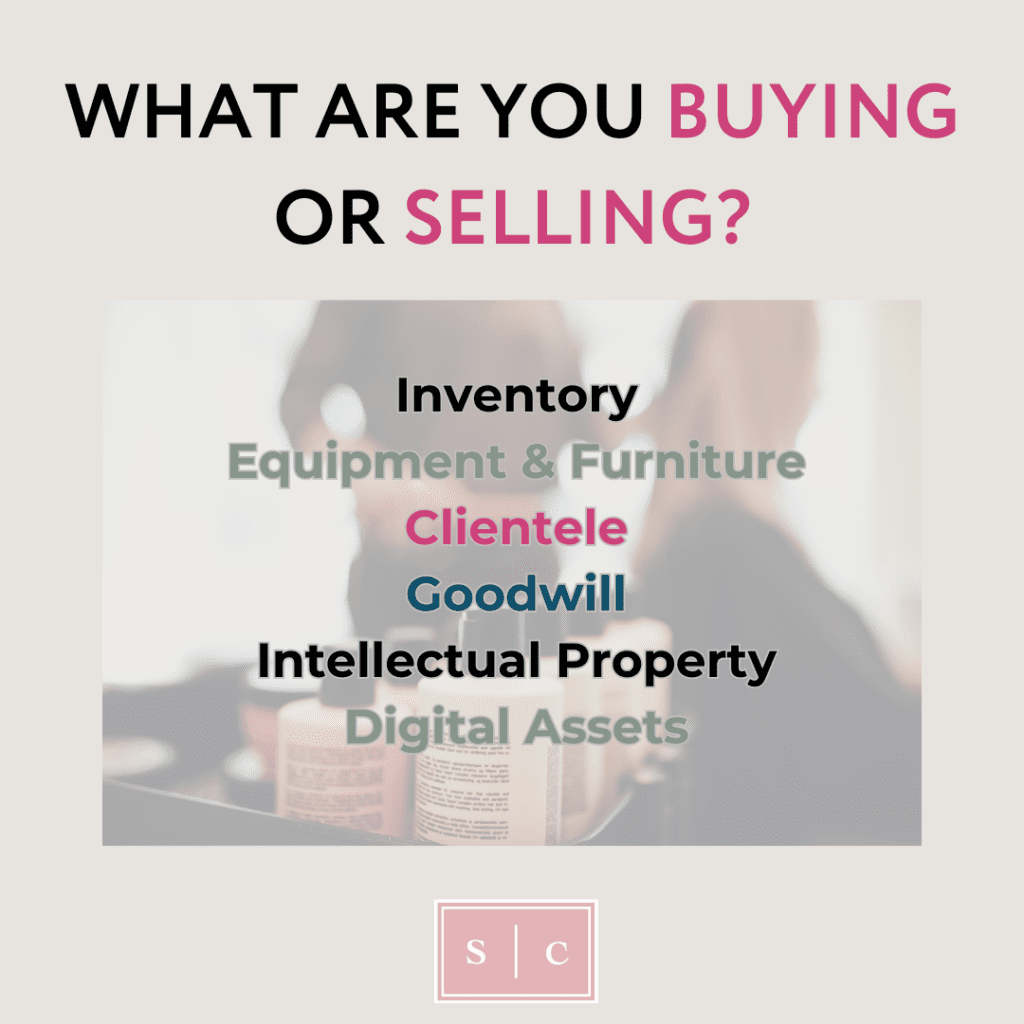
Getting your head around what is actually for sale is the best first step. In traditional beauty industry businesses for sale transaction we look at both physical and digital assets, inventory on hand and past business financial performance to arrive at a value.
Assessing the “Intellectual Property” or “Goodwill” of a business will help a buyer better understand how much they could potentially pay out, or what the fair market value is of a business. A tangible or fixed value can be assumed on intellectual property, if the property serves to continue the profitability of the business.
Goodwill is more of an assumption on a fair market value of a brand, business name, customer base and reputation.
Sometimes it is only the tangible assets for sale- hair color, skin care products, chairs, furniture, website or social media for instance.
Other sales include people… we are not selling or buying people, that is not possible! The value in people is assigning a monetary value to their future behavior OR an assumption of value based on past sales.
Occasionally, a transaction can be partially based on future initiatives or what can be predicted and measured in potential revenue growth. Whichever way you choose to look at this largely depends on finding a great seller-buyer match.
If you decide to assign a value to the entire client base or pay a lump sum for the “goodwill” of a business, you are essentially buying a job. While that may not sound sexy, someone’s life’s work is very valuable when it translates to saving you years of time, energy and money to accomplish the amount a salon business seller can offer in one deal.
“Buying a job” or a single-person business is a common scenario with people who may want to jump-start a business, for those who may otherwise struggle to find employment, or build quickly on their own. Think about people who are buying a salon full of business, to people who have just moved into an area or who may have a slight language barrier, who provide beauty services. This is extremely valuable.
Building a clientele takes many years… an influx of business can drastically enhance someone’s career or business.
Once you get your head around what it is you will be selling or buying, finding that person to do the deal with can possibly be one of the hardest things to do. Alignment in several areas is key to this translation being successful.
Can the buyer maintain what the seller does, or do they have the resources to assume an influx of new business? Aspects like running social media accounts, bookkeeping, similar price points and vibe are all important things to consider.
Everyone is different, and you may not find the right buyer who uses the same product lines, is priced similar to you or has your level of customer service. Write down what you feel are important aspects to consider for your business as to where your priorities lie in buyer-seller compatibility.
Amongst the businesses and individuals- hair stylists, estheticians, nail technicians, barbers and massage therapists we have helped exit, we found 5 top ways to find someone who is looking to buy an individual’s client base:
Get your hair, nails, wax, etc. done- Shopping around for a buyer by getting beautiful is a great way to find someone who is similar to you. Go to various salons, spas, or barber shops to get an eye on a potential buyer. Don’t be afraid to seek out students or newer graduates, as your offer may be more appealing to someone who is building a clientele. Even salons who are newer or struggling to gain more business may consider compensating you for what could potentially translate into more business for them.
Advertise- Social media and Salonspa Connection can greatly help connect buyers and sellers. If you are in a hurry, let’s say you are moving or are quickly becoming unable to service your clientele, get aggressive with ads or incentivizing referrals.
Someone you know- There is a good chance another beauty professional in your salon or a friend from past salon jobs or school would be more open to a buyout than a complete stranger. The downside is if they have been performing services for as long as you have, they are likely booked solid. Think about past connections in the beauty industry that resonate with you and start making phone calls!
Beauty Suppliers and Sales Consultants- What better place to start looking for a buyer than where thousands of beauty pros shop for supplies or talk to the same people! Often, product companies have provider searches on their website which is great, if the products you use are of the utmost importance to your clients. Tapping into your network can yield incredible things when searching for someone to buy a salon clientele.
Competitors- Last but not least, that cool chick you see on Instagram who does beautiful work like you is a great person to chat with. If she isn’t interested, chances are she may know someone who is.
Get conversations going and maximize your opportunities’ visibility if you are trying to sell a beauty client base. Hire salon acquisition specialists to help you along this journey!
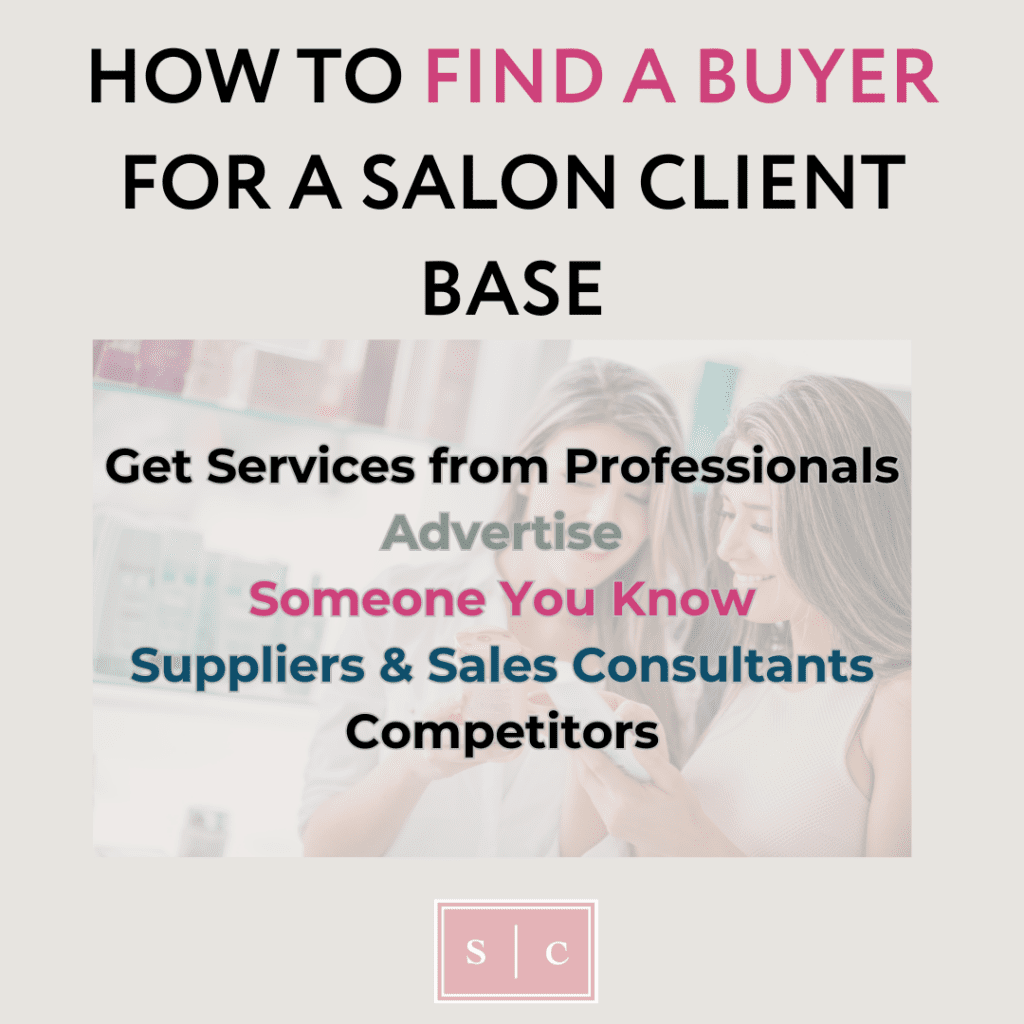
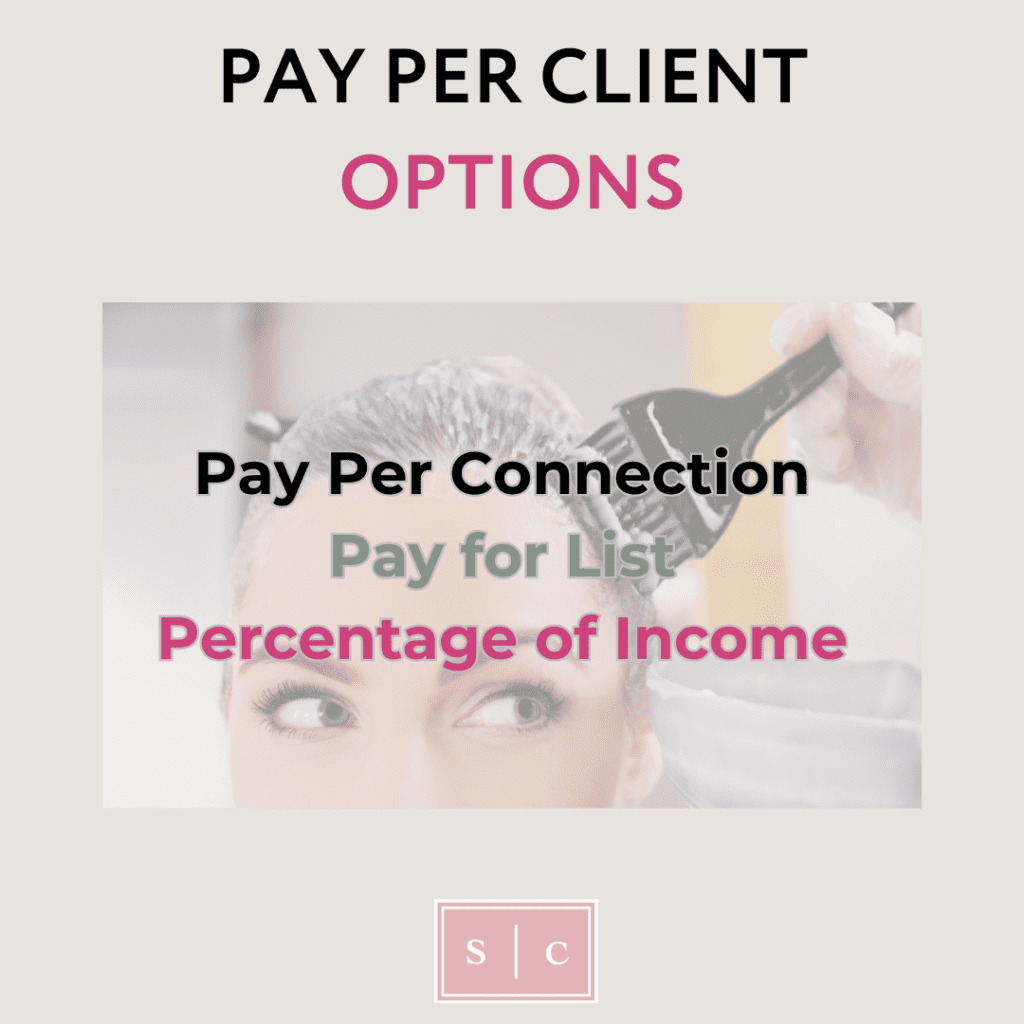
Now that we understand HOW to find a buyer for a beauty client base, let’s discuss how to structure a fair payment for the business. Paying for a beauty industry client base can be done in an agreed upon, set amount or based on future performance.
The best bet for a buyer is to pay based on future performance plus any intellectual property and physical assets the seller owns that the buyer wishes to assume.
Assets should be sold at a fixed price; the “people” aspect of the business is the biggest variable to the sale of an individual service provider’s business. Three ways to assign a monetary value to clientele are:
If a seller has an amazing network that would take years to establish or phenomenal digital assets but not enough business quite yet, you are buying potential and reputation.
We often see sellers who are fantastic at marketing who do not know how to maximize their network or digital assets. If a buyer sees a ton of potential, a great way to pay per client is by paying for the future “new client leads” the seller generates, for a period of time.
In order to effectively accomplish this type of transaction, you will need to understand how new clients come to the seller or what is their lead generation strategy? Examples would be: Google, Yelp, Facebook, Instagram, Other social media platforms, referrals and phone number.
Next, understand consistencies in lead flow. Is there seasonality to the business, or does the seller pay for ads or attend events that yield a large number of new clients?
Maybe your seller has amazing online sales or has client recruitment nailed down through digital assets. Assess the new client and sales leads process & acquisition to get a good idea of where to place the most emphasis on value.
Paying a fixed number based on a list of people someone has provided beauty services over time is one way to handle a sale. Better yet, paying for only higher value clients may be a good way to go.
Sellers who receive regular payouts from a buyer’s service income generated from the seller’s client is a win-win situation. Buyers don’t pay for goodwill upfront and sellers stay engaged to ensure their former clients go to the buyer.
Placing a number; a monetary assignment of the value of a client can be tricky- the good news is there are several ways to look at this. Let’s first think of this from a buyer’s POV: What does it cost or how much would you pay for a lead or new client?
If you are hoping to get 10 new clients and you are putting money, time and effort into getting them, what would this cost you? OR maybe what is a new client worth to you?
Getting your head around cost per new client and client lifetime value is one way of assessing the value of each client.
Bridal or specialty beauty businesses would especially benefit from a pay-per-lead type of payout as these types of services tend to be much higher, one time services.
The problem with this tactic is how much the client would spend. Some clients get the works, and some come in for trims twice a year. A better way of looking at this would be to be compensated in some manner, every time your client comes to the buyer, for a certain period of time or once you meet a predetermined, set amount for the client buyout.
For example: Sally visits Jenny every 6 weeks, Sally’s total bill comes to $250 when she visits the salon. What if the buyer paid Jenny 25% of every visit Sally makes to the buyer for one year?
Sally would normally spend around $2,166 per year with Jenny. If a buyer paid $541 yearly or $153 quarterly to Jenny for 1-2 years, that would be a clear-cut plan for placing a value on a client over time.
Or, let’s say Sally tries the buyer out and only comes in once, because she discovers they are not a good fit. The buyer has only paid out $62.50 for a potential client that may actually return or refer someone else, someday.
Either way, the buyer learns more about what Jenny’s clientele expects and can adjust (or not) from there, and everyone is fairly compensated and happy.
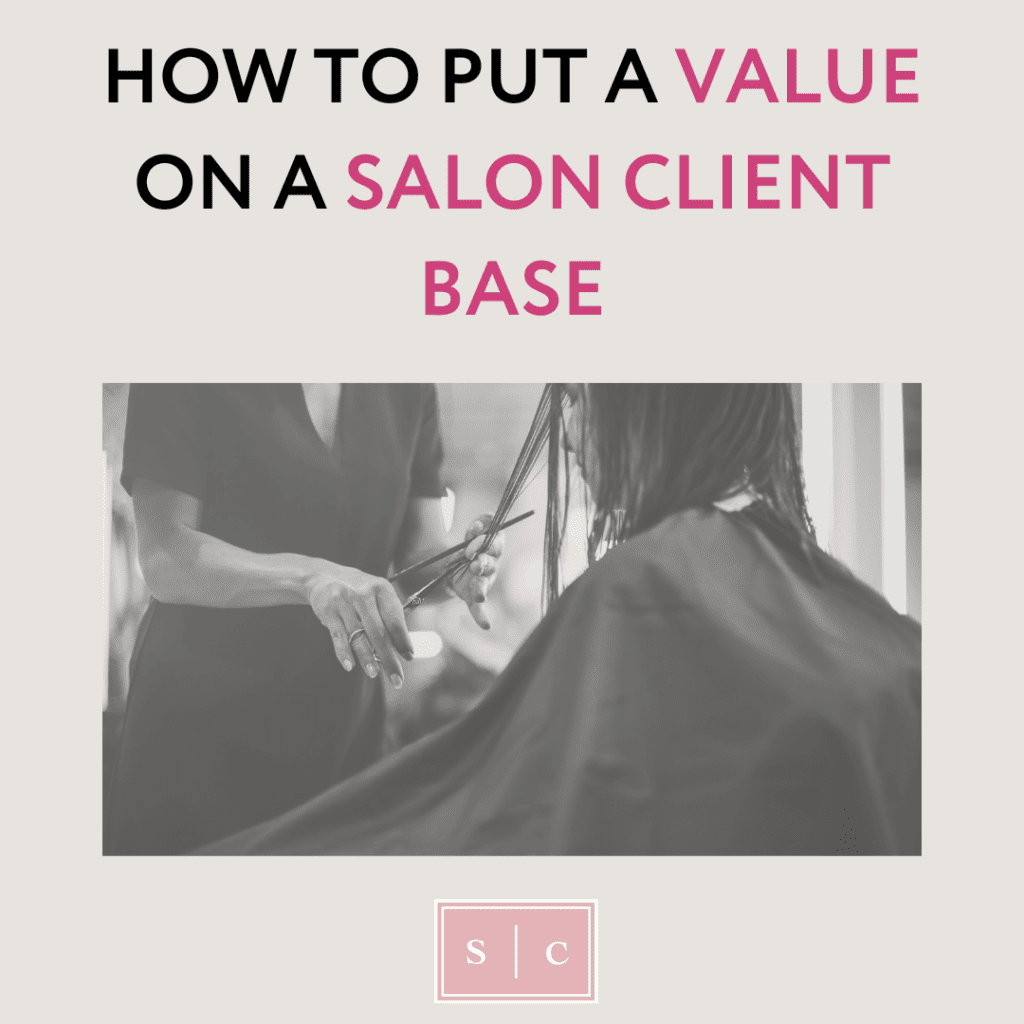
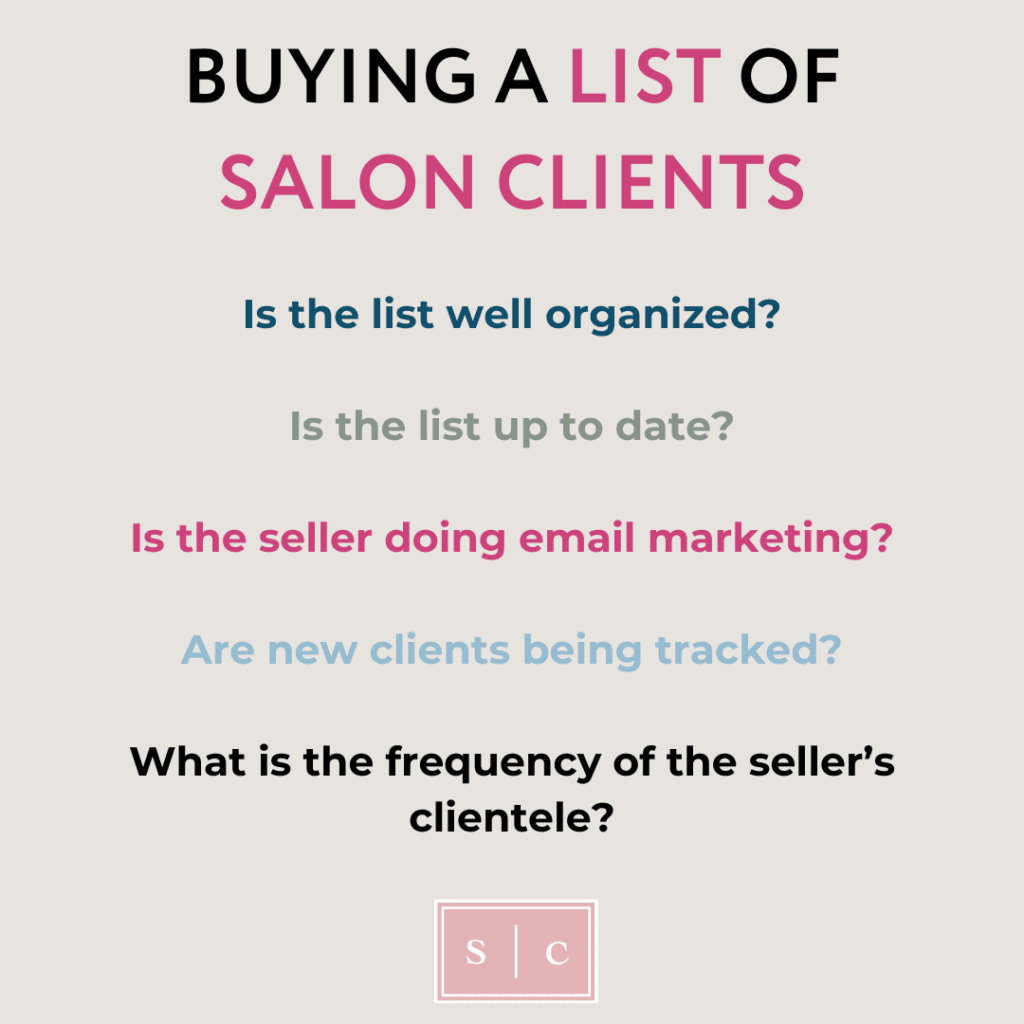
Buying a database full of contacts is another way buyers purchase a client list. Often, the value of a financial return is greater than what the assets are. When considering this option, there are a few things you will need to assess before considering buying a contact list.
Laws differ from state to state as to buying contacts or a client list. Some states require the list must be sold as a business. Check state laws and hire a good attorney before you sell a list of contacts!
Organized- Is the list organized and is everyone in one database? Paper books or beauty pros who do not utilize salon software to manage clientele may not be the best to sell a list.
Up to date- Are all current customers in the list? When was the last time the seller updated contact information?
Email marketing- Does the seller do email marketing or any type of correspondence through email? An engaged email list can be very valuable when you understand how to manage it.
New clients- How are new clients being categorized and where they come from being tracked in the list? How many new clients is the seller getting and how often?
Frequency- One of the best things about being in the beauty industry is we have a subscription business model without the hassle of a subscription business! Recurring revenue or frequency of client visits will tell you a lot about what a buyer can expect for a salary.
Understanding new client behavior and tracking is very helpful when buying a salon client list. Make sure if you are buying a list, it has as many details as you need to make a wise decision.
Tracking seller client sales and establishing a clear cut payoff amount or time frame is the only answer to a successful transaction when a buyer pays the seller for future business. This requires excellent bookkeeping, communication, clear terms in an agreement and transparency in sales.
Most of the time, this is easily tracked with great salon booking software. Before a buyer or seller agrees to any terms, a well-thought-out reporting, payment schedule and end game should be established.
Both buyers and sellers can utilize current data to predict payment and termination of a sales agreement.
Parties: Kristen (“Buyer”) and Jenny (“Seller”)
Total Sales Price: $65,000
Background: Jenny operates in a suite salon with furnishings she owns, along with inventory and established digital assets.
Purchase Components and Payment Structure:
Upfront Payment at Signing: $20,000
Remaining Balance: $45,000
This balance will be paid through a commission structure on revenue generated from Jenny’s clientele and leads.

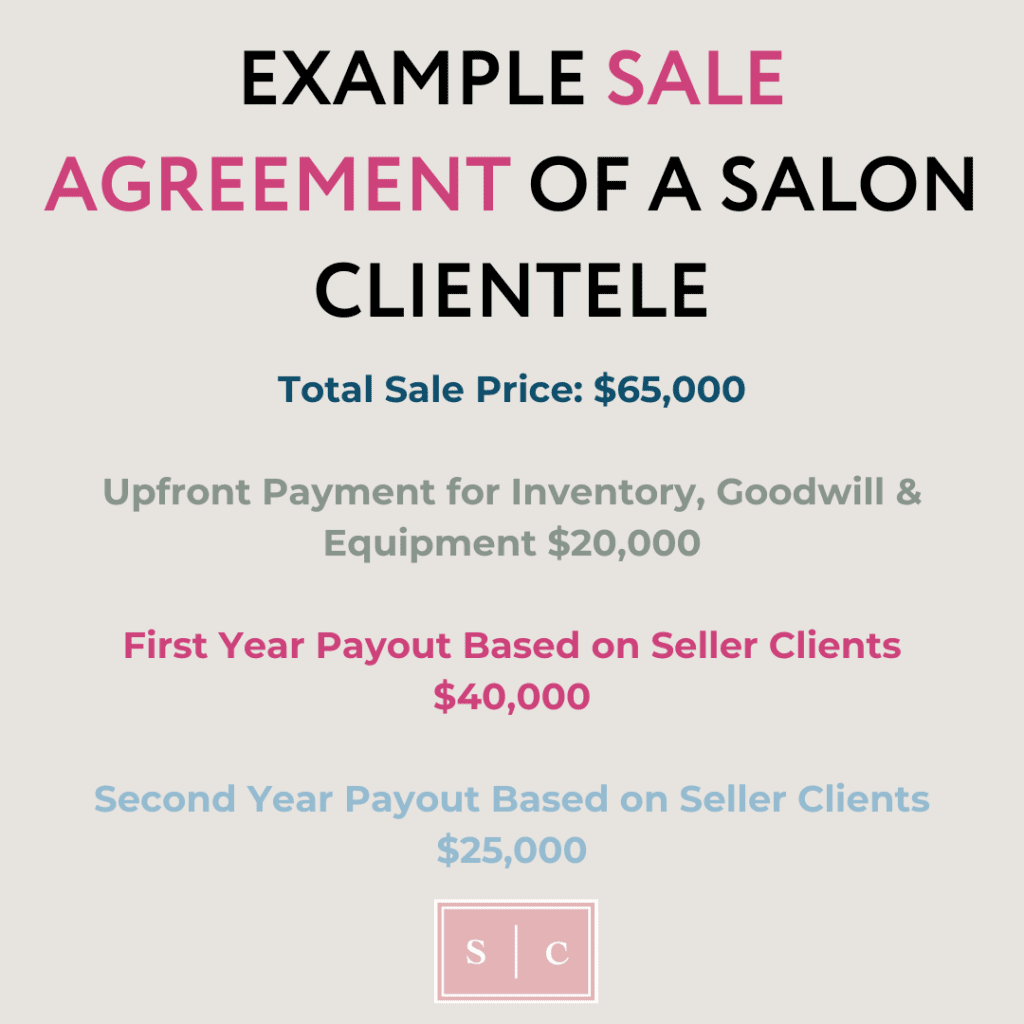
Kristen agrees to pay Jenny 25% of the quarterly revenue generated from:
Payments continue quarterly until the $45,000 balance is fully paid.
Year 1 Performance and Payments:
Year 1 total paid to Jenny: $40,000
Remaining balance after Year 1: $25,000
Note: After Year 1, new leads from digital assets no longer count toward commission. Only existing clients generate commissionable revenue going forward.
Year 2 Performance and Payments:
Payment Schedule:
Year 2 total paid to Jenny: $25,000
Total Payment Summary:
If buying a beauty industry clientele is something you are considering, please know you have options. Paying upfront for tangible assets and inventory is the best starting point.
The value a buyer or seller places on client sales is the variable and negotiation piece that should be carefully thought through. Each buyer is different- some would like to remain a single person business, some desire to grow a team.
Agreeing upon a payout and how a seller will be compensated for the business they have created is key to a successful sale. I hope you have found this blog to be helpful and have a better idea on how to have a successful exit for any shape and size salon business!
Connect with me and Salonspa Connection on social media to get more great tips on buying and selling salon industry businesses.
Yours in service,
Susan Wos